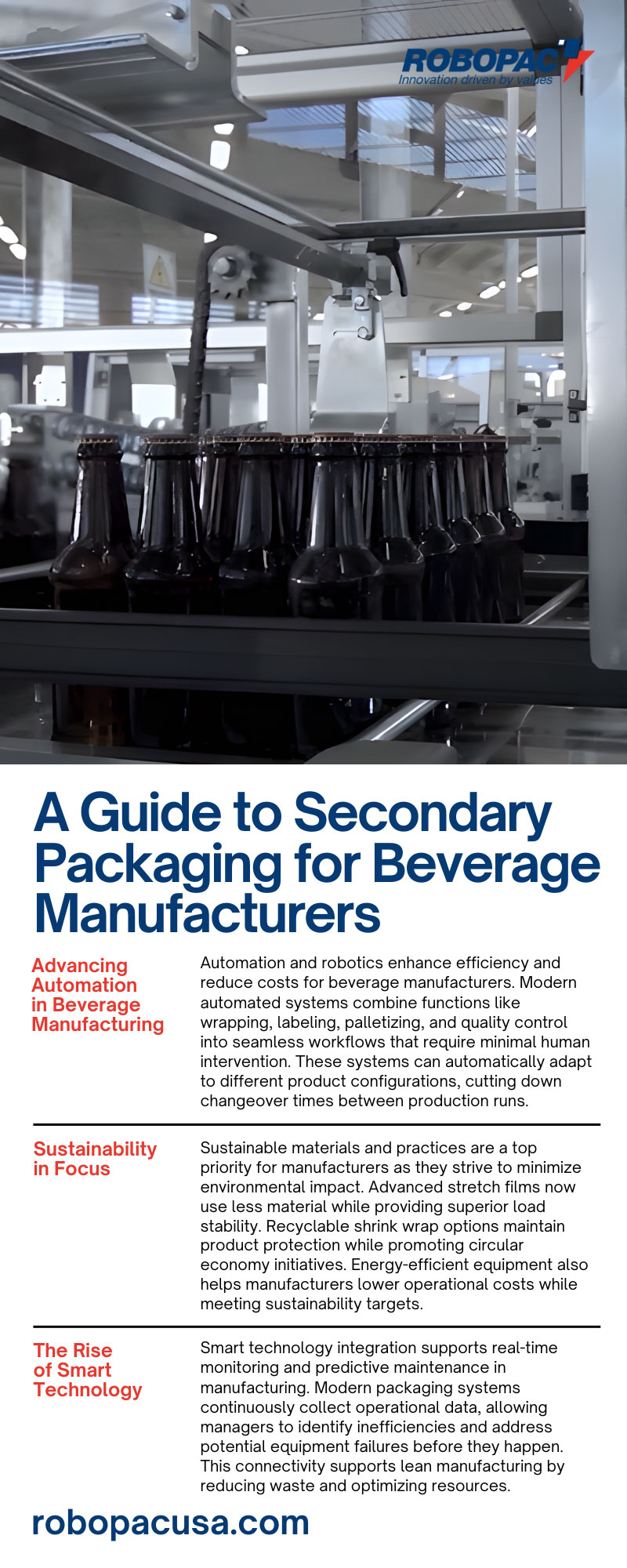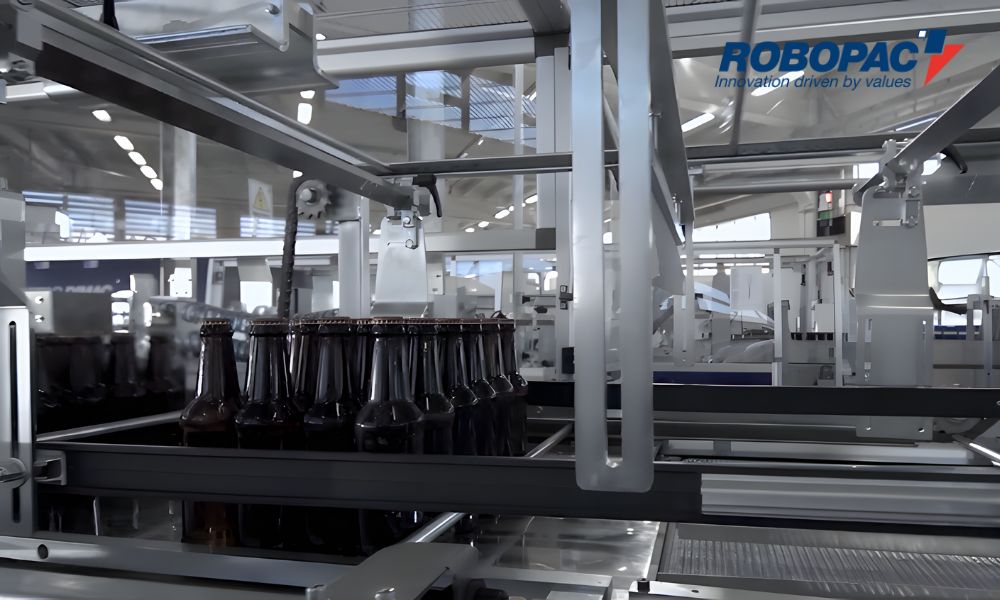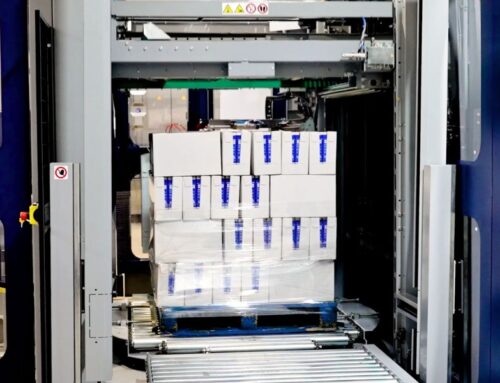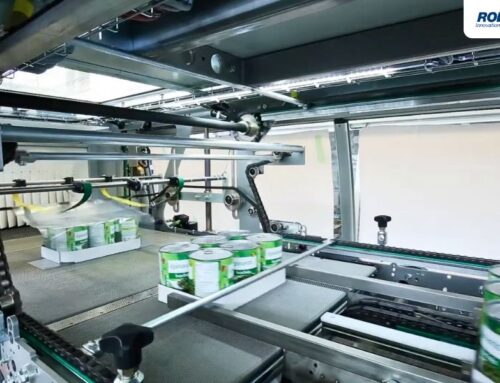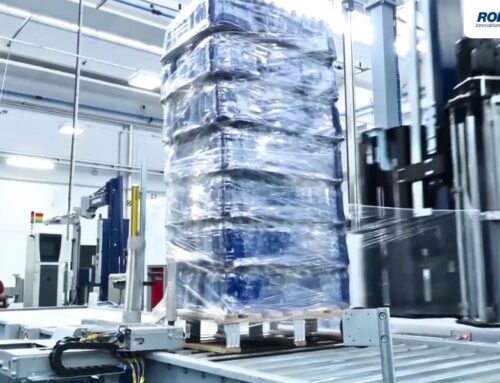Beverage manufacturers face unique packaging challenges that demand sophisticated solutions. From protecting fragile glass bottles during high-speed production to meeting sustainability goals while maintaining cost efficiency, secondary packaging plays a critical role in beverage operations. In this guide, we’ll explore the essential secondary packaging equipment, emerging trends, and proven strategies that help beverage manufacturers optimize their packaging processes and stay competitive in a rapidly evolving market.
Understanding Secondary Packaging in Beverage Manufacturing
Secondary packaging encompasses all processes that occur after primary packaging—the bottle, can, or carton that directly contains the beverage. This stage involves grouping, wrapping, palletizing, and preparing products for distribution. The beverage industry presents distinct packaging requirements compared to other sectors. Liquids create weight distribution challenges, glass containers demand extra protection against breakage, and temperature-sensitive products require specialized handling.
Modern secondary packaging systems must balance multiple objectives: protecting product integrity during transport, maximizing warehouse space utilization, minimizing material costs, and supporting sustainability initiatives. These competing demands require sophisticated equipment that can adapt to different product types while maintaining consistent performance.
Current Challenges Reshaping Beverage Packaging Operations
There are many problems that beverage manufacturers must consider when finding the ideal secondary packaging solution for their process. High-speed packaging demands, waste reduction, quality control, and labor management are all major factors in optimizing secondary packaging processes.
Meeting High-Speed Packaging Demands
Beverage manufacturers, first and foremost, face stringent demands for high-speed packaging. Consumer markets expect consistent product availability, which compels production lines to operate at maximum capacity.
This reality means traditional packaging methods struggle to keep pace with modern bottling speeds, creating bottlenecks that reduce overall facility efficiency. To match contemporary production demands, manufacturers require equipment capable of handling up to 150 cycles per minute for shrink wrapping and over 200 palletized loads per hour for stretch wrapping.
Navigating Waste Reduction and Sustainability
Modern beverage manufacturers face regulatory pressures and evolving consumer expectations when it comes to sustainability, making the push for waste reduction without compromising cost-efficiency a key component of secondary packaging. This dual requirement forces companies to evaluate every aspect of their packaging process, from material selection to equipment efficiency. The challenge intensifies further when considering global distribution requirements, where packaging must reliably protect products across varied climate conditions and diverse handling practices.
Quality Control Amidst Pressure
Maintaining rigorous quality control becomes increasingly complex as production speeds escalate and sustainability requirements grow. Beverage manufacturers must verify consistent package integrity while utilizing less material and operating faster equipment. This delicate balance necessitates precision-engineered systems that can maintain exacting quality standards under the most demanding conditions.
Addressing Labor Management Challenges
Another challenge for beverage packaging operations is labor management, as skilled packaging technicians are becoming harder to find and retain. Automated solutions offer a strategic response to this issue, providing additional benefits such as reduced human error and improved workplace safety. However, the successful implementation of automation requires careful planning to enable seamless integration with existing production systems and workflows.
Key Trends Transforming Beverage Secondary Packaging
Currently, there are numerous trends that are changing the nature of secondary packaging for beverage distribution. Automation, sustainability, smart technology, and flexible packaging are all major developments in the industry.
Advancing Automation in Beverage Manufacturing
Automation and robotics enhance efficiency and reduce costs for beverage manufacturers. Modern automated systems combine functions like wrapping, labeling, palletizing, and quality control into seamless workflows that require minimal human intervention. These systems can automatically adapt to different product configurations, cutting down changeover times between production runs.
Sustainability in Focus
Sustainable materials and practices are a top priority for manufacturers as they strive to minimize environmental impact. Advanced stretch films now use less material while providing superior load stability. Recyclable shrink wrap options maintain product protection while promoting circular economy initiatives. Energy-efficient equipment also helps manufacturers lower operational costs while meeting sustainability targets.
The Rise of Smart Technology
Smart technology integration supports real-time monitoring and predictive maintenance in manufacturing. Modern packaging systems continuously collect operational data, allowing managers to identify inefficiencies and address potential equipment failures before they happen. This connectivity supports lean manufacturing by reducing waste and optimizing resources.
Flexible Packaging for Diverse Product Needs
Beverage manufacturers are increasingly producing a wide variety of product types, from glass bottles and aluminum cans to flexible pouches. Flexible packaging systems allow manufacturers to switch between formats quickly and efficiently without sacrificing speed or performance. These systems help manufacturers adapt to diverse product portfolios in a competitive market.
Essential Secondary Packaging Solutions for Beverage Operations
Now that we’ve discussed the challenges and trends of secondary packaging for beverage manufacturers, our guide will delve into the solutions. Shrink wrapping machines, stretch wrappers, and other secondary packaging equipment help the beverage production industry optimize workflows and increase efficiency.
Shrink Wrapping Machines
Shrink wrapping machines are a fundamental component of beverage secondary packaging. These systems expertly create secure multi-packs while simultaneously protecting individual containers from potential damage during handling and transport. Advanced shrink wrappers demonstrate versatility by accommodating various bottle shapes and sizes, automatically adjusting settings based on specific product requirements.
Modern shrink wrappers offer seamless integration with upstream production lines, maintaining continuous flow and preventing bottlenecks. Special heat control systems deliver uniform shrinkage, even around complex bottle geometries, for professional aesthetics and secure containment.
Stretch Wrapping Equipment
Beverage stretch wrapping equipment provides palletization capabilities vital for efficient beverage distribution. These systems apply consistent film tension around palletized loads, which supports stability during transport and minimizes material consumption. Advanced stretch wrappers incorporate pre-stretch capabilities, significantly increasing film yield and reducing packaging costs substantially.
Top sheet application capabilities in stretch wrappers also protect products from dust and moisture throughout storage and transport. This feature is particularly valuable for beverage products sensitive to contamination or temperature fluctuations. Automated film cutting and sealing further confirm consistent package quality while reducing the need for operator intervention.
Depalletizers and Material Handling Systems
For efficient warehouse operations, automated solutions like depalletizers and integrated material handling systems efficiently handle the movement of both incoming materials and outgoing products. This capability reduces manual labor requirements while simultaneously enhancing workplace safety. These systems can integrate seamlessly with existing warehouse management software, thereby optimizing overall material flow.
Laser-Guided Vehicles
For precise internal logistics, laser-guided vehicles (LGVs) offer superior performance compared to traditional automated guided vehicles (AGVs). Their accuracy minimizes product damage during transport and improves overall system reliability. LGVs are highly adaptable to evolving facility layouts and can meet diverse operational requirements, providing a flexible solution for material movement.
Building Partnership Relationships for Long-Term Success
Successful secondary packaging operations depend on strong partnerships between beverage manufacturers and equipment suppliers. These relationships extend beyond initial equipment purchase to encompass ongoing support, training, and system optimization. Companies like Robopac USA, with experience in beverage packaging since 1987, understand industry-specific requirements and can provide tailored solutions that address unique operational challenges.
To secure a leadership position in the evolving beverage secondary packaging landscape, embracing innovation in automation, sustainability, and system integration is paramount. Partner with Robopac USA. Contact us today to build a strategic partnership that drives profitability and environmental responsibility for your business.
